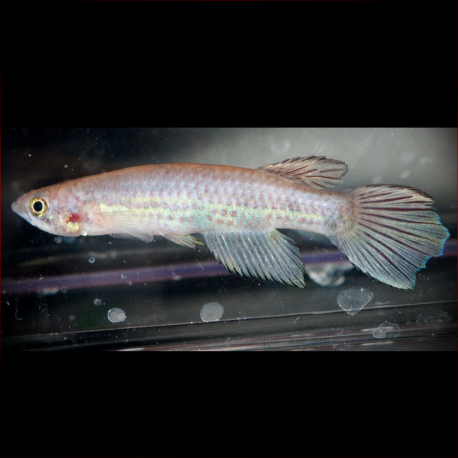More info
Datasheet
General Description
Epiplatys Mesogramma, a species belonging to the Nothobranchiidae family within the Cyprinodontiformes order, is part of the widely-distributed genus of West African aplocheiloid killifish. The genus includes various species with distinct distribution patterns split into eastern and western groups.
Aquarium Setup
For an Epiplatys Mesogramma, an ideal aquarium setup would involve a heavily-planted or natural-style arrangement with a sandy substrate, driftwood roots, branches, and dried leaf litter. The presence of leaf litter not only enhances the natural feel but also promotes the growth of microbe colonies, providing a secondary food source for fry. It is recommended to avoid using natural peat to protect the environment. Dim lighting works best for this species, but adding plant species like Microsorum, Taxiphyllum, or Anubias, along with floating vegetation such as Ceratopteris spp., contributes to their well-being.
Behaviour
Epiplatys Mesogramma tends to dwell mostly near the water surface and exhibits predation behavior, feeding on terrestrial and aquatic invertebrates, zooplankton, and small live or frozen fare in aquarium settings.
Feeding and Diet
In nature, Epiplatys Mesogramma is a predator consuming terrestrial and aquatic invertebrates, zooplankton, and other small prey. In captivity, they accept dried foods but should be regularly fed small live or frozen fare like Artemia nauplii, Daphnia, Moina, and insects such as crickets or Drosophila fruit flies.
Reproduction & Dimorphism
Male Epiplatys Mesogramma are more colorful, possess more extended fins, and grow larger than females. The species reproduces through typical killifish breeding behaviors, with the male courting the female and the female laying eggs in suitable substrate.
Habitat and Distribution
Endemic to the Ubangi River drainage in southwestern Central African Republic, Epiplatys Mesogramma is mainly found in specific localities within this region. The Ubangi River is a significant tributary of the Congo River, and this species maintains a restricted distribution to certain areas to preserve bloodlines and avoid hybridization.

